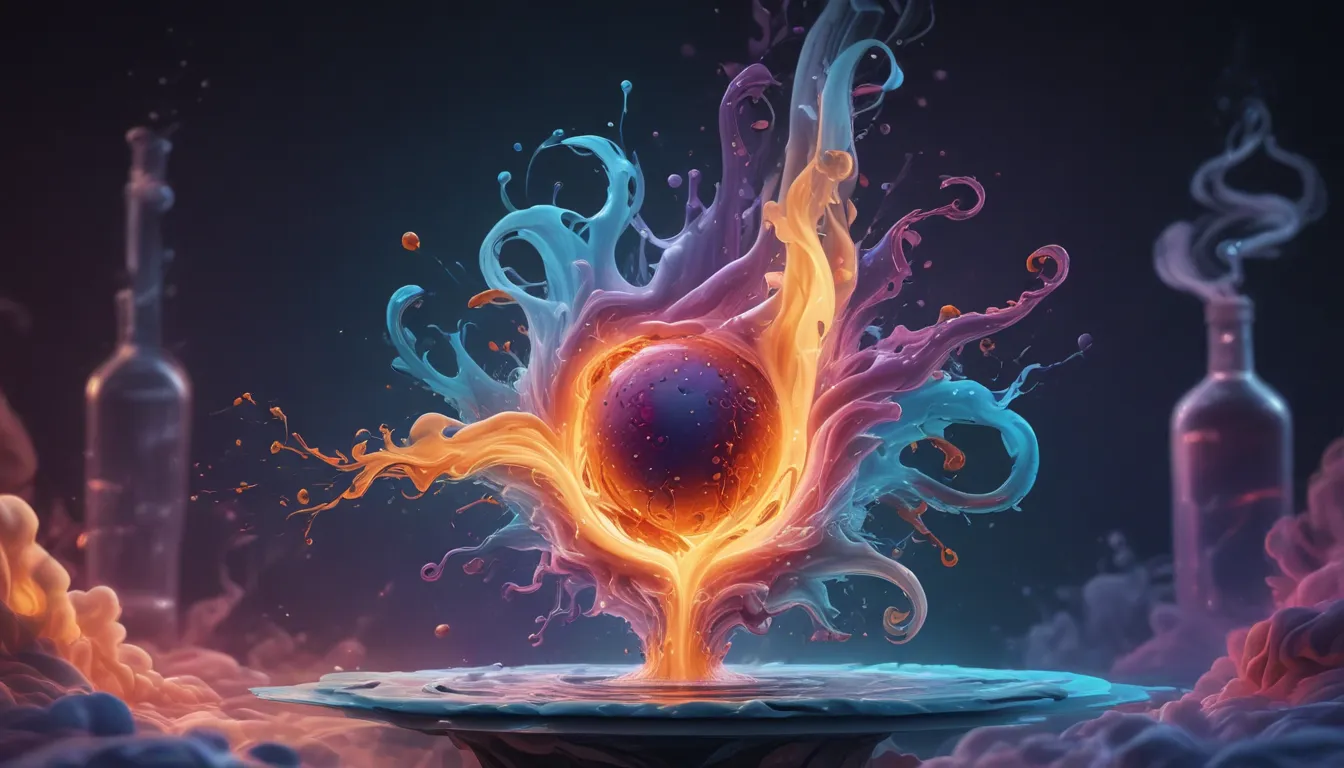A Note About Images: The images used in our articles are for illustration purposes only and may not exactly match the content. They are meant to engage readers, but the text should be relied upon for accurate information.
In the realm of chemistry, the concept of excited states introduces us to a dynamic world where atoms and molecules undergo remarkable transformations. From fluorescence to chemical reactions, excited states play a pivotal role in shaping our understanding of the hidden wonders of chemistry. In this article, we will embark on a captivating journey through 16 astounding facts that unravel the mysteries of excited states, shedding light on their significance and applications in the field of chemistry.
Understanding the Excited State
The excited state in chemistry signifies a state of higher energy that an atom, molecule, or particle enters when it absorbs energy. This transition alters the electron configuration, leading to changes in physical and chemical properties.
Electron Promotion
During the excited state, electrons are elevated from their ground state to higher energy levels or different orbitals. This leap occurs when atoms or molecules absorb energy, often in the form of photons, prompting electrons to ascend to higher energy levels.
Emitting Light
As electrons descend from the excited state back to lower energy levels, they release excess energy in the form of light photons. This emission of light gives rise to phenomena like fluorescence, phosphorescence, and luminescence.
Significance in Spectroscopy
Excited states play a pivotal role in spectroscopic techniques such as UV-Vis spectroscopy and fluorescence spectroscopy. These methods utilize light absorption and emission to explore the energy levels and transitions of molecules.
Diverse Lifetimes
The lifetime of an excited state can vary significantly, spanning from nanoseconds to microseconds or longer. Factors such as the species’ nature and environment influence the duration of the excited state.
Energy Absorption and Chemical Reactions
In the excited state, atoms and molecules become more reactive after absorbing energy, enabling them to partake in chemical reactions that are otherwise unattainable in the ground state. These reactions are vital in fields like photochemistry and photobiology.
Role in Photosynthesis
Chlorophyll molecules in photosynthesis rely on their excited states to capture sunlight and convert it into chemical energy, driving the photosynthesis process in plants and other organisms.
Luminescent Materials
Materials like glow-in-the-dark toys and fluorescent dyes contain compounds that can be excited to higher energy states. When these electrons return to their ground state, they emit light, creating the vibrant glow we observe.
Quantum Mechanics and Excited State
Excited state behavior is governed by the principles of quantum mechanics, aiding scientists in understanding and predicting energy levels, transitions, and properties of excited states.
Biological Implications
Excited states are crucial in biological processes like vision, DNA damage and repair, and protein functioning. Understanding these states in biological systems holds immense importance for medical and biochemical research.
Flame Spectroscopy Application
Flame spectroscopy utilizes excited states of atoms and ions in flames to analyze elemental composition, identifying different elements via emission spectra observation.
Laser Technology
Laser technology heavily relies on excited states principles, employing stimulated emission in excited atoms or molecules to amplify light and produce intense beams.
Excited State Decay Pathways
Atoms and molecules in the excited state can revert to the ground state through various pathways, including releasing energy as heat or emitting photons.
Multiple Excited States
Some species can have multiple excited states with distinct energy levels, leading to complex diagrams and spectroscopic signatures due to varied transitions.
Excited State Interactions
Interactions between excited states can result in energy transfer, quenching, and exciton dynamics, essential in fields like solar cells for efficient energy transfer.
Engaging in Chemical Reactions
Excited states of reactants and intermediates are crucial in numerous chemical reactions, enabling new bond formations, bond breakages, and unique reaction pathways.
Discovering the Fascination of Excited States
The realm of excited states in chemistry unveils a captivating world where atoms and molecules dance to the rhythm of energy absorption. From luminescent materials to photosynthesis, the impact of excited states reverberates across various scientific domains, enriching our understanding of chemical phenomena.
FAQs about Excited State
- Q: What defines an excited state in chemistry?
-
A: An excited state in chemistry signifies a state where atoms or molecules absorb energy, transitioning to higher energy levels than their ground state.
-
Q: How do atoms or molecules enter the excited state?
-
A: Atoms or molecules ascend to the excited state by absorbing energy, typically in the form of photons, energizing electrons to higher energy levels.
-
Q: What occurs when an excited state returns to the ground state?
-
A: As an excited state reverts to the ground state, excess energy is released, manifesting as light emissions like fluorescence or dissipated heat.
-
Q: What practical applications do excited states offer?
-
A: Excited states find applications in spectroscopy, laser technology, solar cells, and photodynamic therapy, contributing to advancements in scientific and technological realms.
-
Q: Can excited states be directly observed?
- A: While excited states cannot be directly observed, their effects are measureable through spectroscopic techniques, enabling researchers to study their properties and behavior.
Embark on a Journey through Plasma Physics
Beyond the realm of excited states lies the captivating field of plasma physics, where charged particles and electromagnetic forces intertwine to reveal the secrets of the universe. Explore plasma physics and its astounding facts to unravel the mysteries of stars, fusion energy, and beyond. Join us on this exhilarating journey of discovery and expand your scientific horizons through the fascinating realm of plasma physics.
Commitment to Quality Content
Each fact shared on our platform is contributed by real users, ensuring a diverse range of insights and information for our audience. Our dedicated editors meticulously review each submission to uphold the highest standards of accuracy and reliability. Trust in our commitment to delivering engaging, authentic content as you explore and learn with us.
In conclusion, the study of excited states in chemistry offers a gateway to a realm of captivating phenomena and groundbreaking discoveries. From fundamental chemical processes to technological innovations, excited states continue to shape diverse scientific fields, promising a future rich with possibilities. Join us in exploring the wonders of excited states and embracing the transformative power of chemistry in our world.






